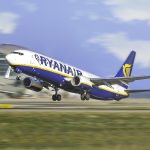Lukša Novak of Split Airport tell us everything about Split Airport, from the importance it serves to its growth and where he sees the airport in the future
Fantastic results have been achieved by Split Airport year after year, but the established growth this year has proved even most astonishing.
In the first six months of 2017, the number of passengers at Split Airport increased by a whopping 27 percent, and already one million passengers have traveled through the terminal at Resnik. But the real explosion of traffic is yet to come as the high season is just beginning.
Split Airport is an extremely successful and is experiencing one of the most beautiful moments of their history. This is further confirmed by Lukša Novak who has led the Split Airport for 25 years.
“We are a cog in the chain of successful development of tourism. Air transport is growing in Croatia, but Split is, however, a different story. We have everything covered. We have become part of the European Union, Croatia is a popular, competitive countries are in trouble and on top of everything Split has become a hit destination. It all adds up to a whopping growth index and fantastic business results,” explains Novak.
Novak tells all in an interview with Slobodna Dalmacija on June 11, 2017.
How much growth is higher than the usual trends?
“In air transport, the annual growth is usually 4, 5, and up to 6 percent. If you’re lucky enough to continually do business successfully in transport, you double that in about 15 years. We’ve managed to achieve that in just six years and it is truly an amazing result. In 2010 we had barely 1.2 million passengers and last year we finished with 2.3 million passengers. Few places can say that over five years in a row traffic is still growing in the double-digits, and there is still an upward trajectory.”
Where, this year, was so much progress made?
“The season is obviously expanding which reinforces its border months, April and October. This April, we grew 63 percent and this is a new and great quality of our business. This is the biggest monthly increase, in the rhythm of one year, ever achieved.”
Same prices and turnover growth. And you are still expecting the peak. Is there room for growth?
“Almost half of the annual turnover we will achieve in July and August, which last year saw over a million passengers. In July, we achieved the highest monthly passenger traffic ever made in Croatia with 544,000 passengers, and we have set an absolute Croatian record in daily traffic with 27,000 passengers. We have already surpassed the daily record this year and we are approaching the figure of 30,000. The monthly turnover this July will likely surpass 600,000 passengers which is at least twice the highest monthly turnover in Zagreb or 50 percent more than what was achieved in Ćilipi.”
During the season, is Split Airport the most important Croatian airport?
“All four summer months we have the most traffic of all airports. We are extremely seasonal in character, but also, when looking at yearly traffic, we are in second and we have never been closer to Zagreb. This year we will reach last year’s turnover of 2.7 million passengers at Zagreb Airport, and we’ll see how much more we will grow.
Last year, for the first time, Croatia had more than 8 million airline passengers, which is almost one million more than the year before. This year it is realistic to expect a million more. Within this growth, Split Airport increases its stake and we are now close to 30 percent of the market.”
And as it financially stands you are the most profitable airport.
“Last year we had 315.7 million HRK of revenue with a net profit of 85.5 million. In total we have serviced about 12,000 aircraft. This great growth and control of expenditures has led us to this level of profitability. In about ten years we have not touched the prices, and we did not want to jeopardize our growth with a price policy. I think this has proved worthwhile.”
As a regional airport in Europe are you struggling with the business?
“In the category of up to 5 million passengers, according to European data, over 50 percent of airports are operating with losses. In the group of up to two million passengers in Europe, two-thirds of them are operating losses. Our results show that we are pretty good and efficient. And among regional airports in Europe that really stands out.
We are now in a phase of significant investment and this increases costs. We’ve gotten into a new category of major regional airports so we will see where we are going, with rising costs.”
How many companies do you cooperate with today?
“We work with 58 companies. For transport it is easyJet and Croatia Airlines, and immediately after is Germanwings, SAS and Norwegian Air. These are our strongest partners. Split is connected to more than 100 destinations out of which over 70 percent are direct flights. London, Paris, Berlin, Frankfurt, Stockholm, Oslo, Helsinki and so on have the most flights to Split.”
Is there a difference between large companies and “low cost carriers”?
“Low cost carriers have contributed to our growth and because of that there is no distinction among carriers. Only on the basis of a larger number of operations is it possible to achieve a better position.”
Of the big players there is still no Ryanair. Why?
“In Croatia, they are still only exclusively present in the airports that can support their flights. There have been meetings and contacts, but for now, they will not come because we have not changed our policy. Split and Dubrovnik do not need to stimulate companies in the season when traffic is growing steadily. That would only create a mess in the market. We are open for talks, but we do not want to change our business policy.”
The growth has forced you to make significant investments. How much, exactly?
“In a total of three years we will invest about 570 million HRK because in addition to the new terminal, whose construction is in full swing, we have to work on the reconstruction of the runway.”
The terminal you are building has a projection of two million passengers and you are approaching the third million. Can the new facility, when completed in 2019, be at full capacity?
“This terminal is 14,000 square meters which is useful in serving 2 million passengers, without a lot of space, but without any disruption in traffic. When we get a terminal that is three times larger, with nearly 50,000 square meters, we will be able to accommodate more passengers. In doing so, we want to keep the current benefits and make sure the operation goes quickly and that the passenger does not do a lot of walking.
Today, the planes take off in five minutes and we want to keep this simple concept that the passengers and companies love. The new terminal will be a fantastic facility which we will be proud of and which will respond to our needs for the next 15 years, at least.”
Will it also have space for great revenue?
“Of course. Our aviation section already holds only 60 percent of revenue. The other business segments grew about 20 percent, while sales of domestic goods, in fact, had the largest increase. People like to buy locally and it has great potential.”
Airports are becoming shopping centers. Will Split Airport go in this direction?
“This is a big topic of the airport, whether or not we should force passengers to buy. Sometimes passengers are even forced to go through the shops when they are primarily seeking their ‘gate’. We want a good compromise. We had traffic in the first plan and the passenger first, and we do not want to take over their space just to give them something to sell.”
In what perspective can and should Split Airport be seen?
“As an important regional airport. This is a definite. We’ll never need to be a hub or transfer port. We want to maximally connect the region with the world. We will develop it as the community. Our goal is that we are the ultimate destination because it gives a multiplier effect. And we should not be squeezing the touristic potential. Growth for the sake of growth is not a goal.”








